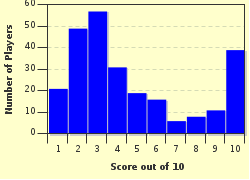Quiz Answer Key and Fun Facts
1. There is no frigate like a book: Which author ushered in the genre of the vampire?
2. Do you speak my language?: Which language of El Salvador is nearly extinct, with only 20 speakers left?
3. Now hold that pose: Which artist is considered the father of modern sculpture?
4. Spinning the globe: Which country is on land claimed by two countries and occupied by a third, and has no native inhabitants?
5. An element of chemistry: Which element is used to colour cubic zirconia to simulate peridot, is essential in carbon arc lights in the movie industry and is used in an alloy to make aircraft engines?
6. A man's home is his: Which very long castle has a tall square tower, and was built originally starting in the 10th century, with the remaining structures mostly from the 14th-15th centuries?
7. Strike up the band: Which composer was almost certainly born in Scotland yet graduated from the University of Copenhagen on 14 May 1545?
8. Give the dog a bone: Which breed got its name from two brothers and a creek?
9. Sue Grafton: What is the name of the "P" book in the Kinsey Milhone alphabetical series?
10. "The War to Save the Union": Which early battle in the Civil War was fought in part to ensure the running of the Baltimore & Ohio Railroad?
Source: Author
CariM0952
This quiz was reviewed by FunTrivia editor
Nannanut before going online.
Any errors found in FunTrivia content are routinely corrected through our feedback system.


